Top 5 Eco-Friendly Pool Designs for Sustainable Living
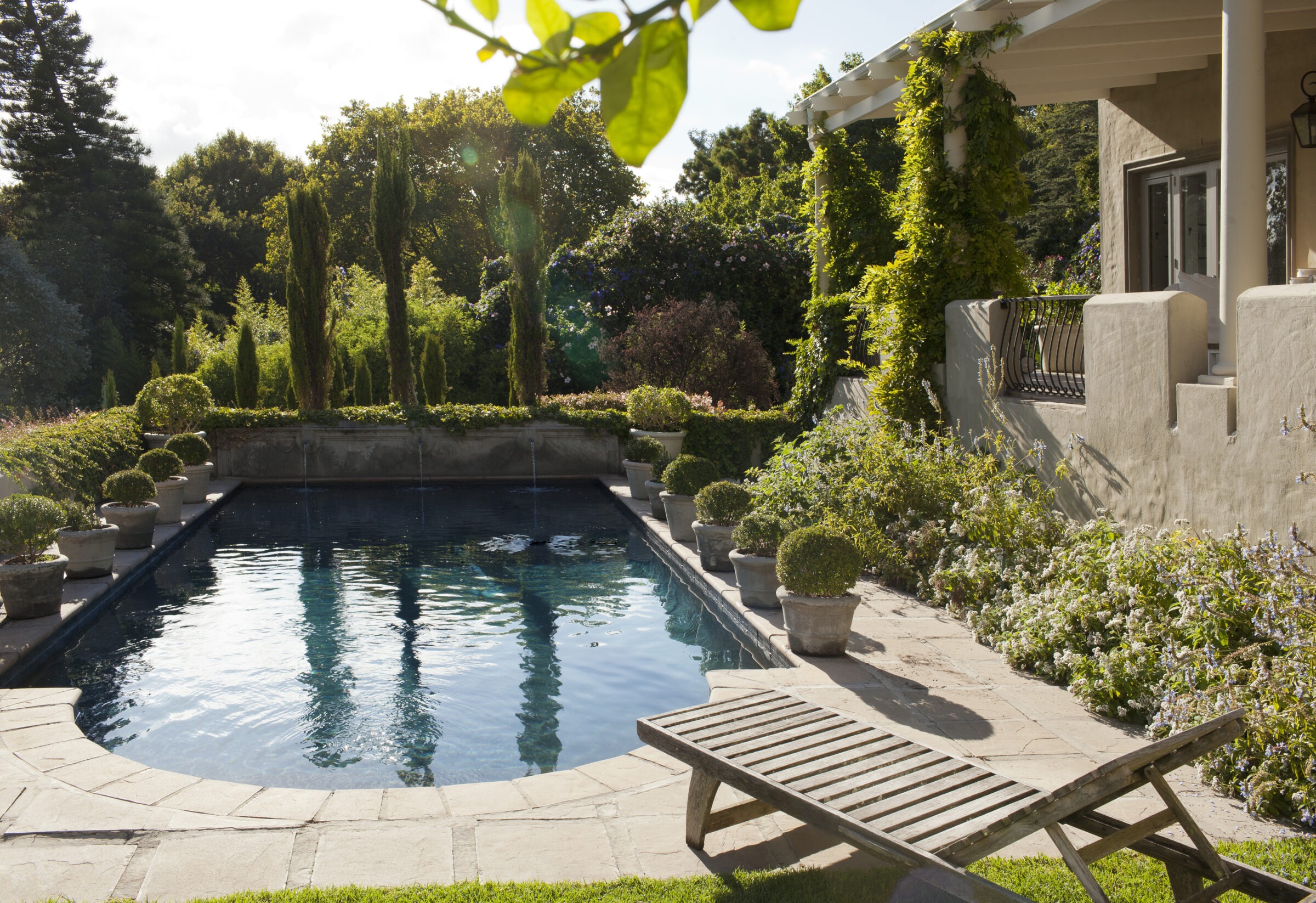
Tired of traditional pools with their heavy environmental impact and high running costs? Wish you could enjoy a backyard oasis without wasting water, energy, and using harsh chemicals that irritate your skin and the planet? Imagine a swimming pool that’s not only a source of family fun and relaxation, but also a green retreat that saves you money in the long run. Discover eco-friendly pool designs and sustainable features that let you have the pool of your dreams while also minimizing your environmental footprint and maximizing your savings.
1. Natural Swimming Pools
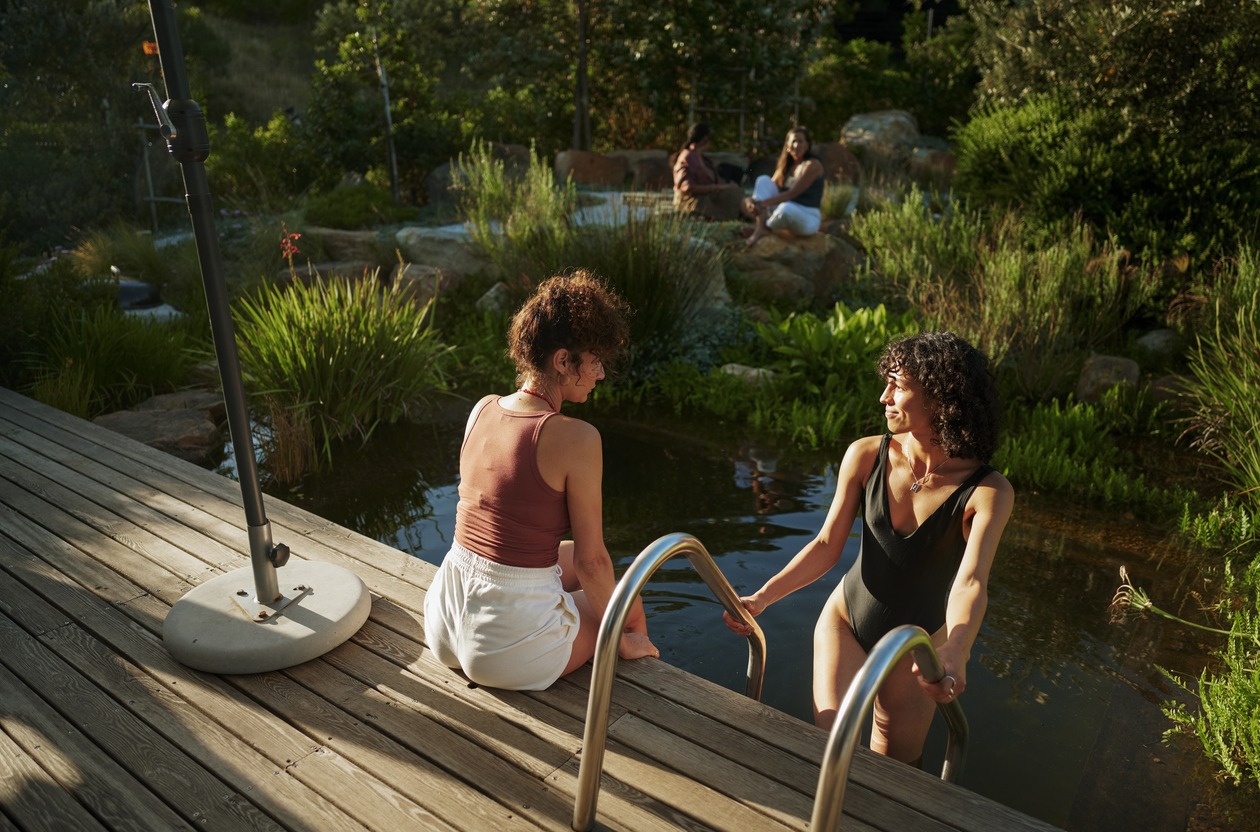
Natural swimming pools (or swimming ponds) are the ultimate chemical-free pool design. Instead of chlorine or salt, these pools use living ecosystems—aquatic plants, beneficial bacteria, and special filtration zones—to keep the water clean. The swimming area is typically paired with a regeneration zone filled with gravel and plant life that naturally purifies the water. The result is crystal-clear water without the eye-stinging chlorine smell.
Natural pools provide a swimming experience that feels like a freshwater lake in your backyard. They’re extremely environmentally friendly because they use zero chemicals and instead support a mini-ecosystem of plants and microbes to maintain water quality. This means no harmful chemical runoff into your garden and no harsh additives that can your irritate your skin or eyes.
Beyond the ecological benefits, natural pools have a unique visual appeal. They often blend seamlessly with a landscape and feature organic shapes, rocks, and landscaping that make them look like a serene pond or part of your garden. Many homeowners find this aesthetic more appealing and family-friendly versus a stark blue concrete pool. Maintenance costs can also be lowered over time—once the ecosystem is balanced, there’s no need to buy chlorine or other chemicals, and the plants come back every year. Do keep in mind that natural pools typically require a larger footprint (for the planted filter zone) and a higher initial investment to install the specialized filtration. However, for those committed to sustainable living, a natural swimming pool is a rewarding choice that offers chemical-free, eco-friendly swimming right at home.
2. Solar-Powered Pool Heating
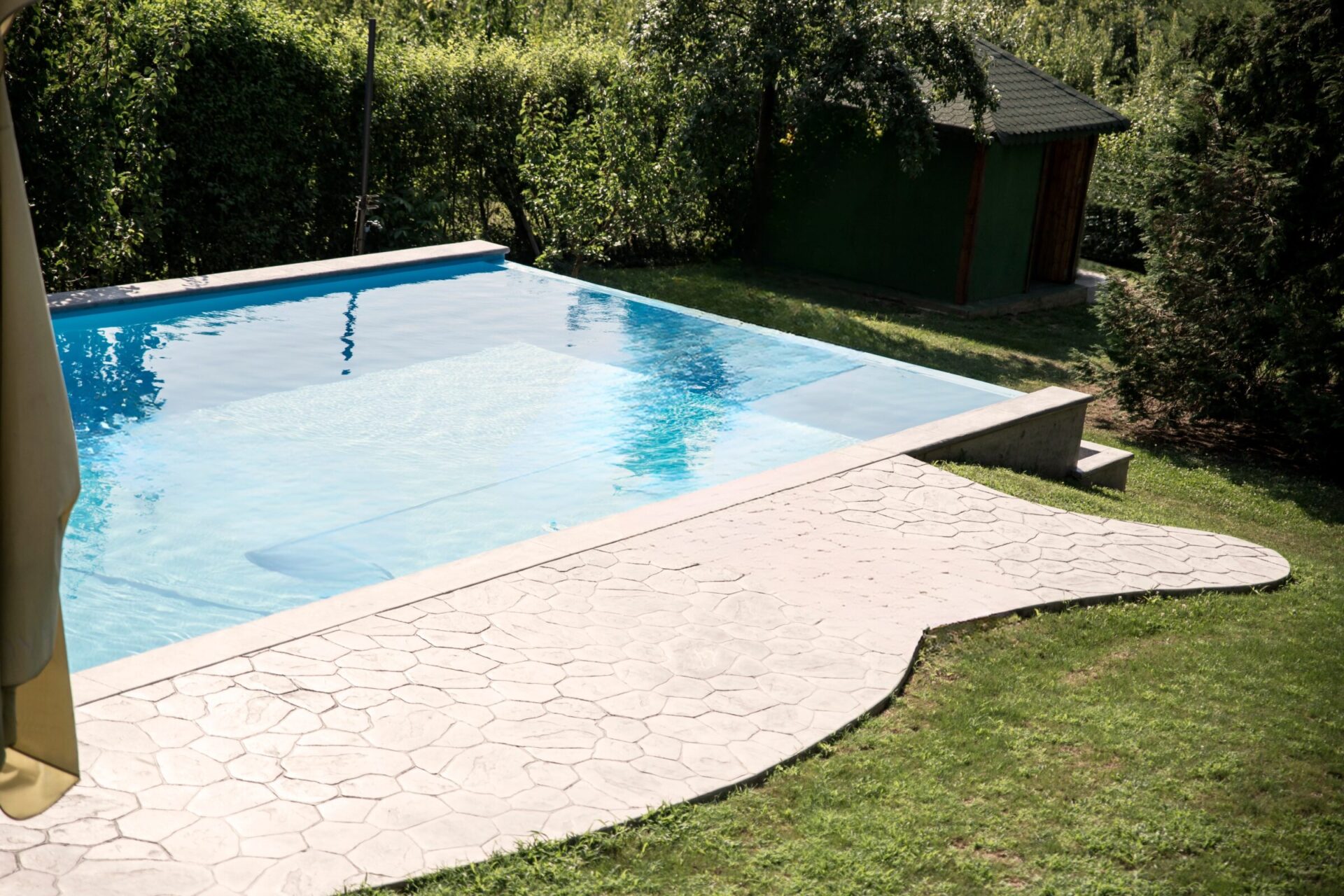
Swimming pools typically require heating, which can be a significant energy drain. Solar-powered pool heating offers an eco-friendly alternative by using the sun’s free energy via solar thermal panels. This method reduces or eliminates the need for gas or electric heaters, cutting down on fossil fuel use and grid electricity. Solar pool heaters can lead to substantial cost savings, often paying for themselves within a few years through reduced heating bills. Solar covers or solar blankets trap solar heat and prevent evaporation, passively warming the water and reducing the need for refills by up to 95%.
Embracing solar heating utilizes a 100% renewable energy source, naturally warming your pool without greenhouse gas emissions. These systems are generally low maintenance and can extend the swimming season. Overall, solar-powered pools are a smart green solution that combines the enjoyment of swimming with the efficiency of clean energy.
3. Saltwater Pools
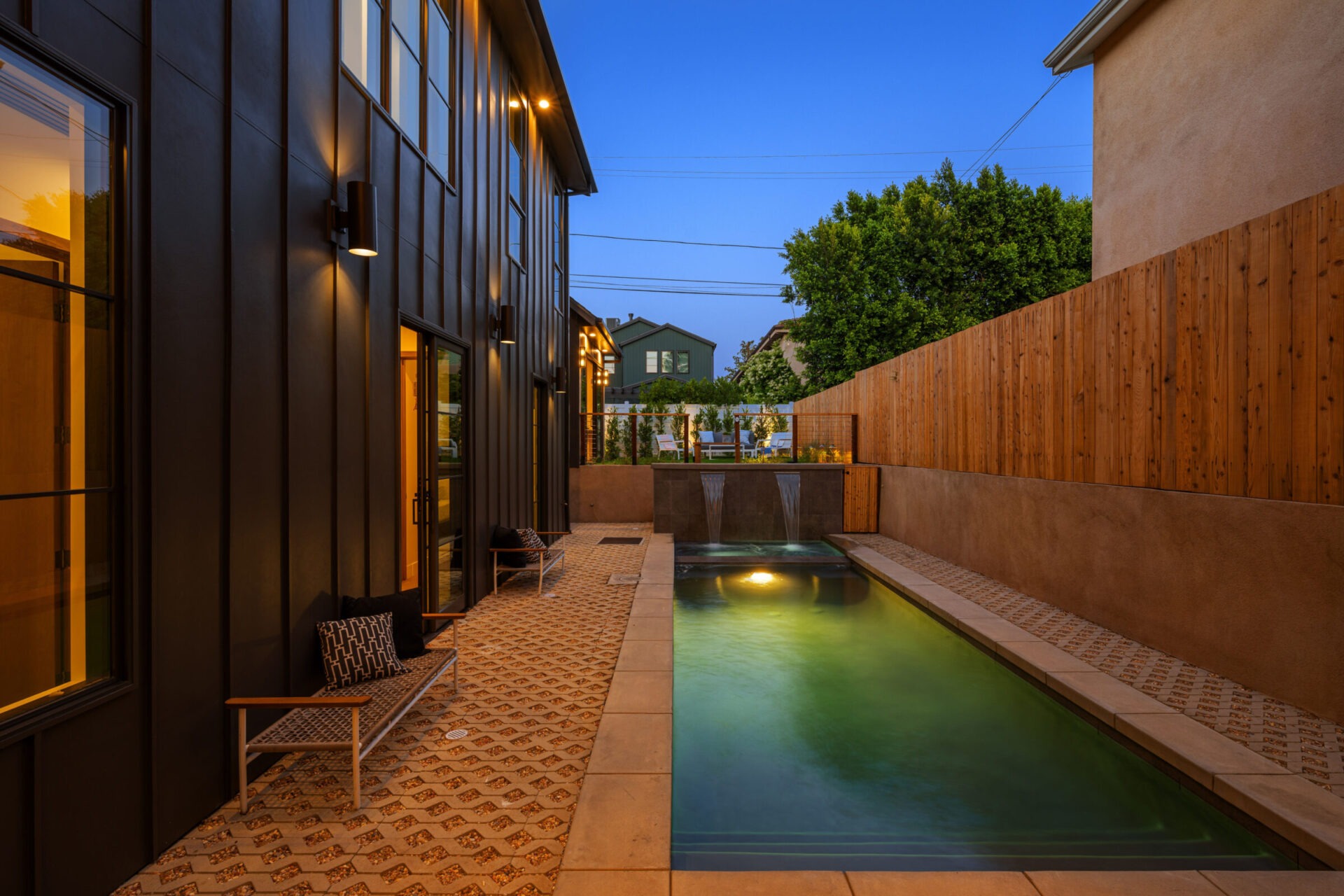
Saltwater pools have surged in popularity as a green pool solution and a gentler alternative to traditional chlorine pools. Instead of manually adding chlorine bleach or tablets, a saltwater pool uses a salt chlorine generator to convert salt into a low level of chlorine gas, which sanitizes the water. This means you still get clean, algae-free water, but with a much lower concentration of chlorine, typically resulting in water that feels softer and has a far milder odor. For families, this translates to less red eyes, less dry skin, and swimsuits that don’t get bleached out as quickly.
From an environmental standpoint, saltwater systems are beneficial because they avoid the regular handling and storage of harsh chemical chlorine. You’re not buying jugs of liquid chlorine or buckets of tablets (which have their own manufacturing and transportation footprint), and you’re not routinely adding potent chemicals into the water that can eventually spill into the environment. Saltwater pools use about 50-75% less chemical chlorine than a standard pool, maintaining sanitation in a more natural, controlled way. The chlorine is produced in situ and continuously at low levels, which means no strong chemical peaks or need for frequent shock treatments. This gentler approach is not only eco-friendly but also convenient. The system is largely self-regulating, so day-to-day maintenance can be easier.
It’s worth noting that a saltwater pool isn’t completely chlorine-free (a common misconception). It still produces chlorine to sanitize the water, but does so efficiently and with lower overall chlorine levels. The reduced chemical usage helps protect local ecosystems. There’s less risk of chlorinated backwash water affecting your lawn or wildlife, and less chlorine off-gassing into the air. Saltwater is also inherently recyclable in the system, so you don’t typically replace all the water as often as with traditional pools (which might need to be drained if the chemical balance goes awry).
In terms of user experience, many pool owners love the “spa-like” feel of saltwater—the water has a slight salinity (about 1/10th that of seawater) that feels silky on the skin. There’s no pungent chlorine smell, and you won’t need to store hazardous chemicals on your property. The initial cost for a saltwater chlorinator unit is higher, and the system uses electricity, but the trade-off is simplified, eco-friendly pool maintenance that aligns with sustainable living. Over time, the reduced chemical purchases and improved swimming comfort make saltwater pools a top choice for an eco-friendly backyard.
4. Rainwater Harvesting Pool Systems
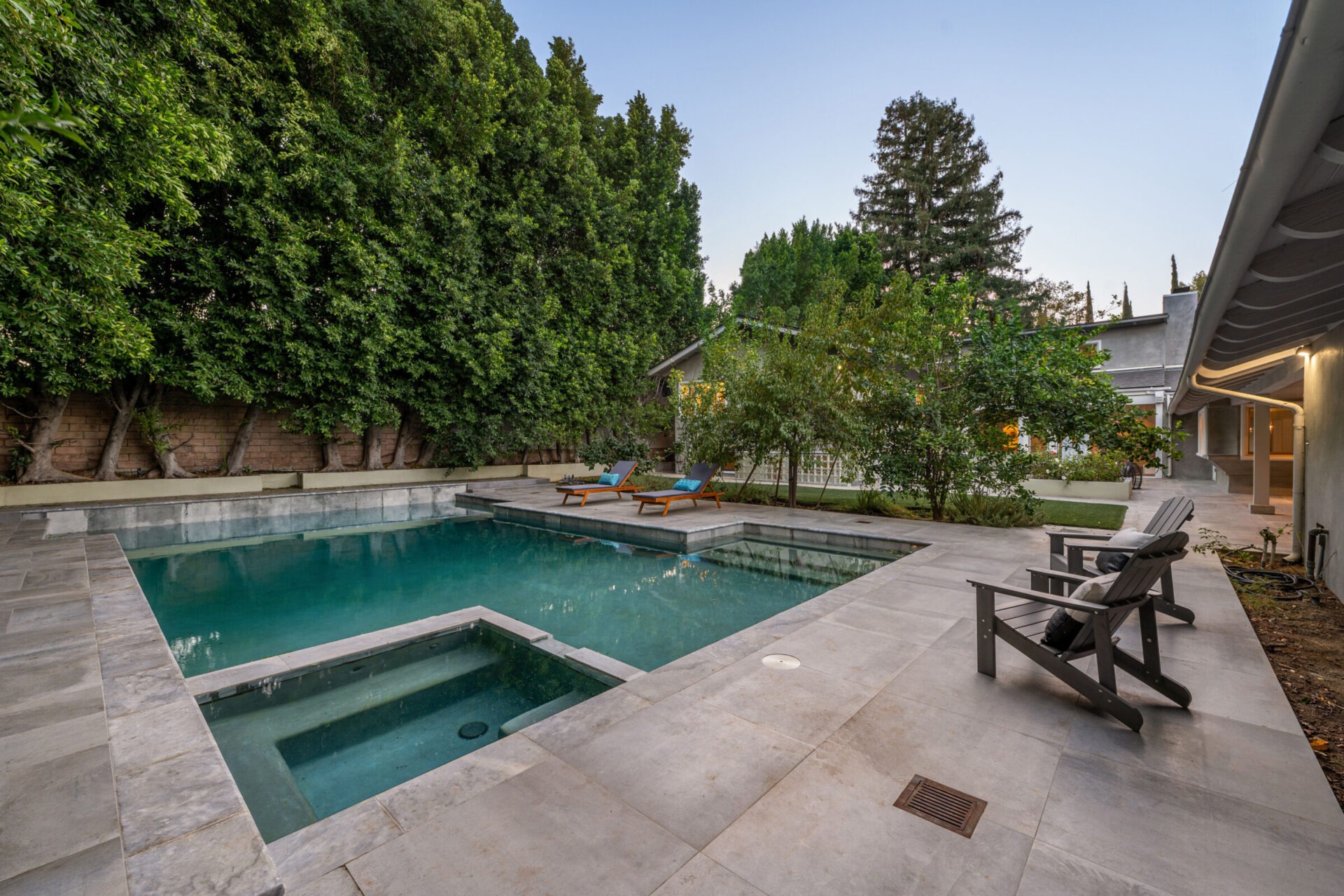
Fresh water scarcity makes rainwater harvesting an innovative, eco-friendly pool design. Rainwater from your roof or deck is captured, filtered, and used to fill or replenish your pool, significantly reducing reliance on municipal water, which offers both environmental and financial advantages.
In drought-prone or water-restricted areas, a rainwater-fed pool provides a sustainable water supply. Even in wetter climates, it helps conserve potable water and lessens the burden on local systems. Homeowners often install storage tanks and specialized filtration to ensure water quality. Gutters and downspouts direct water to the pool or a connected cistern. Proper filtration, sometimes including UV sterilizers, cleans the collected rainwater effectively.
Beyond topping up the pool, harvesting rainwater reduces stormwater runoff and erosion by capturing water before it reaches drains. Storing this water eases demand on municipal stormwater systems and treatment plants. Rainwater, naturally soft and chlorine-free, benefits pools and garden irrigation. Overflow from the pool’s rainwater system can create a fully sustainable yard by watering lawns and landscaping.
Implementing rainwater harvesting requires planning, including overflow control and dedicated plumbing. However, pool contractors are increasingly experienced with these systems. Over time, the benefits include lower water bills and the assurance that your pool isn’t unnecessarily depleting local water resources. This forward-thinking design makes your pool a dual asset: for recreation and as a water reserve, representing a pinnacle of sustainable pool features in an era of water challenges.
5. Energy-Efficient Equipment and Design Features
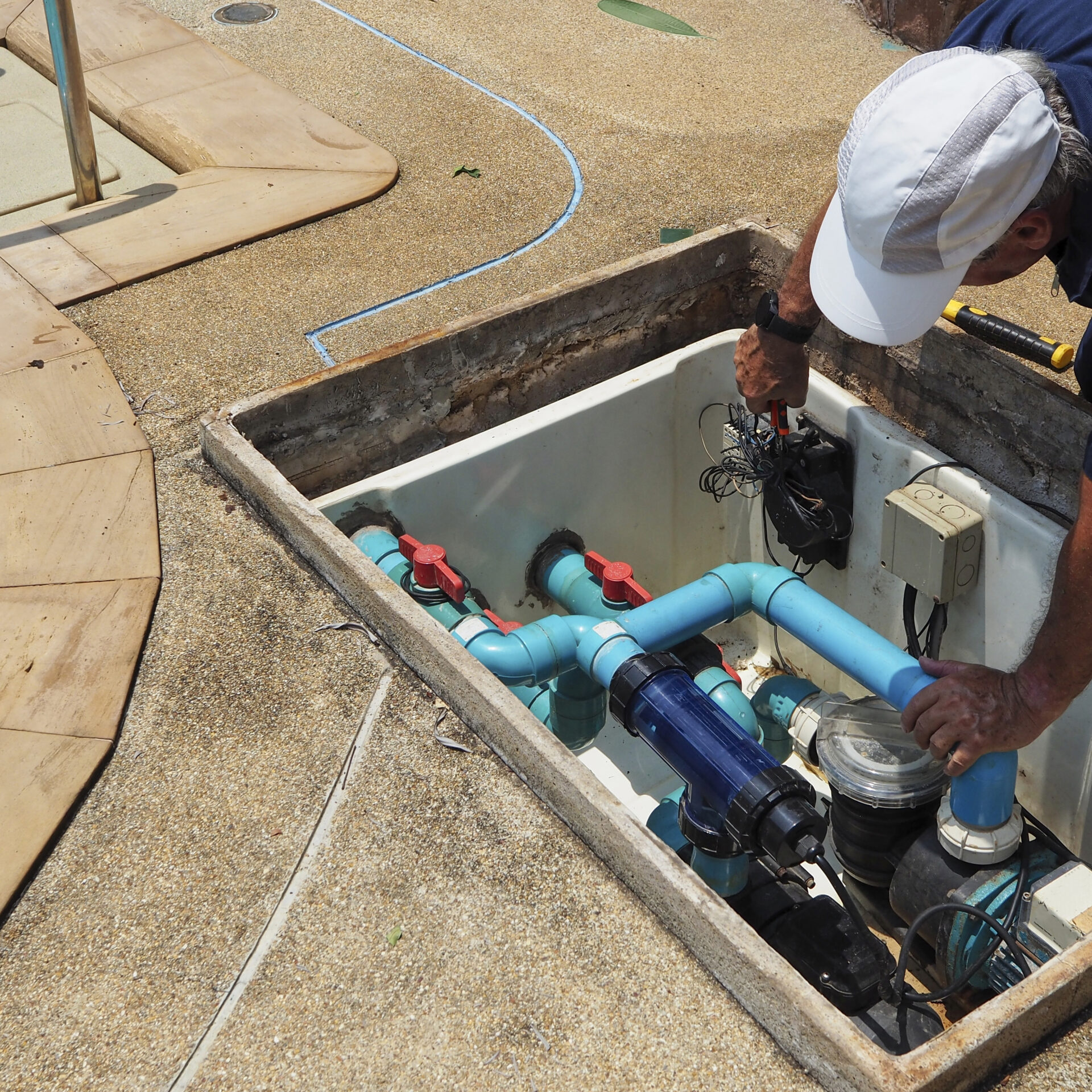
Upgrading to energy-efficient pool equipment and smart design features significantly reduces a pool’s environmental impact. Variable-speed pumps can cut energy use by up to 90% compared to traditional single-speed pumps, leading to substantial electricity savings and lower emissions. Efficient LED lighting and automation systems further enhance sustainability by using less energy and optimizing pool operations. LED lights consume a fraction of the energy of older bulbs and last longer, while automation can schedule filtration for off-peak hours and dispense chemicals only when needed. Integrating pool equipment into a smart home system provides convenient control and maximizes efficiency.
Water-saving design features, such as automatic pool covers, are also crucial. They nearly eliminate evaporation, conserve water, and help retain heat, reducing energy needs and chemical use by keeping out debris. Even landscaping, like windbreaks, can minimize evaporation and maintain warmer water temperatures naturally.
Choosing eco-conscious construction materials, such as recycled glass tiles or composite decking, lessens the environmental footprint of building a pool. These materials often offer greater durability and require less maintenance, reducing waste. Similarly, light-colored pool surfaces can lower water temperatures in hot climates, while insulation helps retain heat in cooler regions. Every element, from pumps and filters to surrounding landscaping, contributes to a more sustainable pool.
Your Partner in Eco-Friendly Pool Design
Designing an eco-friendly pool is all about thoughtful choices that benefit both you and the environment. Whether it’s swimming in chemical-free natural pool waters, heating your pool with sunshine, or capturing rain to keep it filled, each of these top five sustainable pool designs proves that luxury and sustainability can go hand in hand. Homeowners who invest in these green pool solutions often enjoy healthier swimming conditions, lower maintenance hassles, and the satisfaction of doing their part for the planet. Moreover, eco-friendly pools can add value to your home. Today’s buyers appreciate features that save money and support sustainable living.
By embracing any (or all!) of the designs above, you’re creating a backyard oasis that aligns with your values of environmental responsibility. Small changes like efficient pumps or solar covers, and big changes like natural filtration or rainwater systems, all contribute to a pool you can feel good about. If you’re dreaming of a more sustainable pool, it’s wise to consult with pool design professionals who have experience in these eco-friendly features. Perfect 10 Pools can help tailor a solution that fits your climate, budget, and family’s needs, ensuring your pool is both family-friendly and Earth-friendly.
Contact us to get started on your next project. We can create something amazing for your outdoor space.
Tags:
